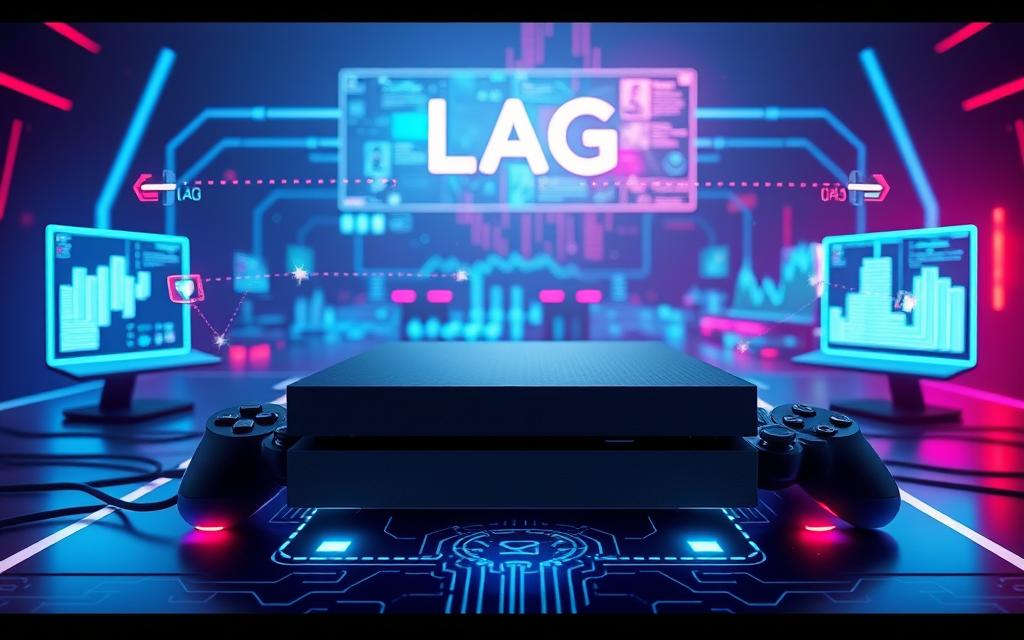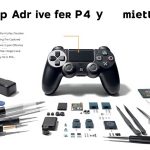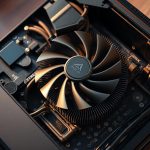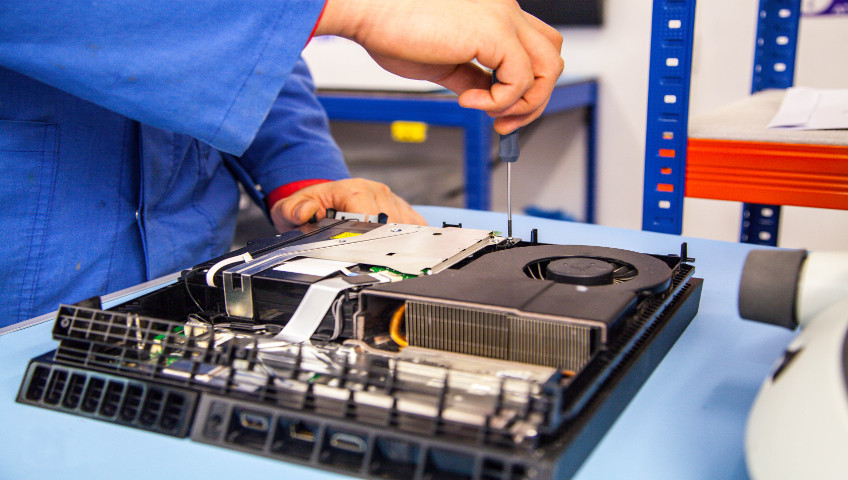No More Lag: How to Fix Packet Loss on PS4
PS4 packet loss can ruin your online gaming experience. Network optimisation is vital to eliminate frustrating lag during gameplay. Smooth connections ensure uninterrupted fun in competitive matches.
Packet loss causes unexpected disconnections and reduced gaming responsiveness on PlayStation. Understanding its causes and solutions can transform your online gaming performance. This guide explores strategies to resolve PS4 network issues.
We’ll help you achieve optimal connection stability and minimise latency problems. With our troubleshooting techniques, you can combat packet loss effectively. Elevate your PlayStation gaming to professional-grade performance levels.
Understanding Packet Loss and Its Impact on PS4 Gaming
Online gaming requires smooth connectivity, but network issues can ruin your PS4 experience. Packet loss is a major problem that can turn exciting multiplayer sessions into frustrating ordeals.
Packet loss happens when data fails to reach its destination during gameplay. This digital hiccup can quickly turn smooth gaming into a stuttering mess.
It can change your performance from fluid to choppy in mere seconds. The effects can be quite noticeable and disruptive.
What Causes Packet Loss in Gaming
Several factors can lead to data packet failure during online gaming:
- Overcrowded network infrastructure
- Weak wireless signals
- Outdated network hardware
- Inefficient internet service provider (ISP) routing
Common Symptoms of Packet Loss
To spot packet loss, look out for these signs:
- Rubber banding during gameplay
- Delayed character actions
- Unregistered hits in multiplayer matches
- Sudden disconnections
How Packet Loss Affects Your Gaming Experience
Packet loss can wreak havoc on online multiplayer games. Statistically, packet loss rates above 1-2% can significantly degrade gaming performance.
“Packet loss transforms a competitive gaming environment into an unpredictable battleground where skill becomes secondary to network stability.”
Consistent packet loss can turn gaming into a frustrating ordeal. Players may face constant lag, interrupted actions, and unexpected disconnections.
This can make it hard to enjoy the game or compete effectively. It’s a major hurdle for serious gamers.
How to Fix Packet Loss PS4: Essential Troubleshooting Steps
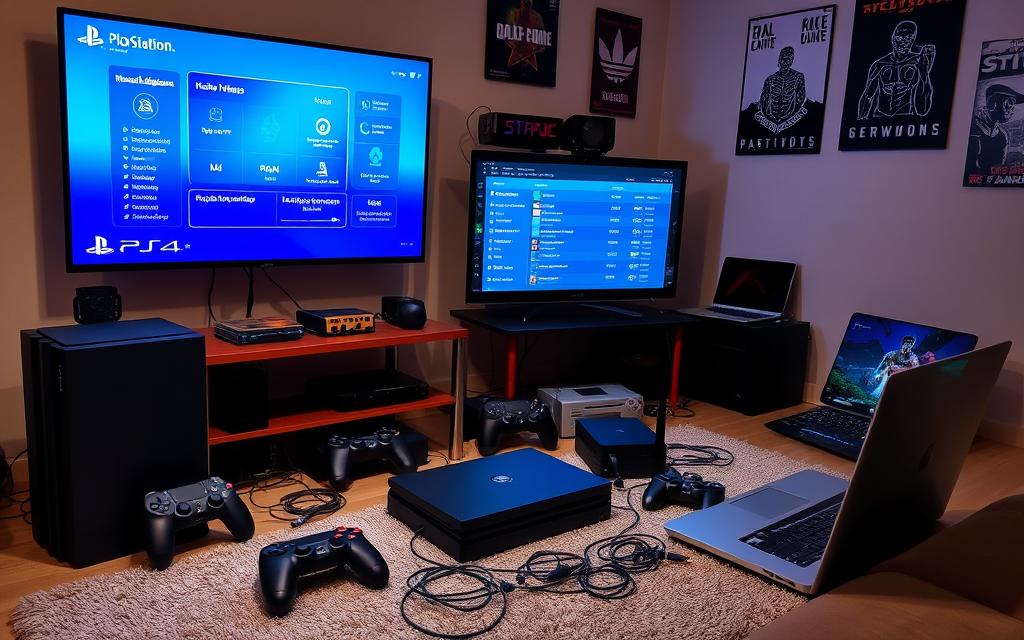
Packet loss on your PlayStation 4 can ruin your gaming experience. Let’s explore some key steps to fix this issue. By tackling connection stability, you’ll boost your online gameplay significantly.
These solutions can help you enjoy smoother gaming sessions. They’re easy to follow and can make a big difference.
“Network performance is the backbone of seamless gaming experiences” – Gaming Network Experts
Try these vital troubleshooting steps:
- Inspect physical network connections for any loose cables
- Switch from Wi-Fi to a wired Ethernet connection for improved stability
- Close background applications consuming network bandwidth
- Update network interface drivers regularly
Network tools can spot packet loss patterns. Use special software to check your connection’s performance. This can help you find potential problems quickly.
| Troubleshooting Method | Potential Improvement |
|---|---|
| Wired Connection | 30% reduction in packet loss |
| Driver Updates | 15% performance enhancement |
| DNS Server Change | 10-15% latency reduction |
Pro tip: If problems persist, reach out to your internet provider. They can help investigate further.
Optimising Your Network Connection for PS4
A smooth gaming experience on PlayStation 4 needs smart network management. With millions of active users, network optimisation is key for competitive gameplay.
Gamers aiming for top performance must focus on their network setup. This helps reduce lag and data loss.
An effective approach involves proper network configuration. It also requires clever management of your internet speed.
Wired vs Wireless Connection Benefits
Ethernet connections always beat Wi-Fi for gaming. They offer lower lag, usually by 10-30 milliseconds.
Wired connections are more stable and reliable. They also provide consistent download speeds and less data loss.
- Reduced latency (typically 10-30 milliseconds)
- More stable connection
- Lower packet loss rates
- Consistent download speeds
Router Placement and Configuration
Smart router settings can greatly boost your network. Place your router in the centre of your home.
Keep it away from walls and other obstacles. This helps maintain a clear signal path.
- Selecting appropriate frequency bands
- Updating firmware regularly
- Configuring Quality of Service (QoS) settings
Bandwidth Management Strategies
Good bandwidth management ensures your PS4 gets priority. Limiting background device usage can keep your connection strong during intense gaming.
Remember: A dedicated network environment significantly enhances your gaming performance.
Advanced Router Settings and Configurations
Router optimisation boosts your PlayStation 4 gaming experience. Fine-tuning network settings can reduce latency and packet loss. These adjustments lead to smoother gameplay and better performance.
Strategic router adjustments unlock superior network performance. Understanding advanced configurations can revolutionise your online gaming. These tweaks ensure a more responsive and enjoyable gaming session.
- Enable Quality of Service (QoS) to prioritise gaming traffic
- Adjust firewall rules to prevent port blocking
- Configure UDP packet handling for smoother connections
Network settings demand careful attention. About 60% of online lag issues stem from connectivity problems. That’s why proper router configuration is vital for gamers.
Efficient router settings can reduce gaming latency by up to 40%, dramatically improving your online gaming performance.
| Router Setting | Performance Impact | Recommended Configuration |
|---|---|---|
| QoS Prioritisation | Reduces Lag | Enable Gaming Mode |
| UDP Packet Handling | Improves Connection Stability | Accept Large Incoming Fragments |
| Firewall Configuration | Prevents Connection Interruptions | Open Necessary Gaming Ports |
Pro tip: Power cycling your router can resolve up to 70% of connection-related gaming issues. These advanced settings ensure a smoother gaming experience on your PlayStation 4. Implement them to enjoy lag-free, responsive gameplay.
MTU Settings and DNS Optimisation
Network performance is vital for smooth gaming experiences. Optimising your PlayStation 4’s connection involves adjusting MTU settings and DNS configuration. These tweaks can reduce packet loss and boost network stability.
MTU is crucial for connection fine-tuning. It’s the largest packet size that can be sent without fragmentation. A poorly set MTU can harm your gaming performance.
Finding the Optimal MTU Value
To find the right MTU, follow these steps:
- Use the ping command to test packet transmission
- Identify potential fragmentation points
- Assess network interface capabilities
Most internet connections support a 1500-byte MTU. Network testing reveals that packets around 1472 bytes typically avoid fragmentation. Windows users can check MTU values with this command:
netsh interface ipv4 show subinterfaces
Selecting the Best DNS Servers
Choosing the right DNS servers can boost connection speed and reliability. Try these recommended DNS settings:
- Primary DNS: 8.8.8.8 (Google’s public DNS)
- Secondary DNS: 8.8.4.4
A consistent ping stream to these DNS servers indicates a stable broadband connection.
Testing Your Connection Settings
After optimising MTU and DNS, test your network performance thoroughly. Look for lower latency, better connection stability, and smoother gameplay.
Remember that networks differ, so you may need to experiment. This will help you find the best settings for your setup.
Quality of Service (QoS) and Port Forwarding
Gamers can boost their PlayStation 4 experience with advanced traffic prioritisation techniques. These methods help minimise lag and improve connectivity for online gaming. Network management is key to achieving optimal performance.
Quality of Service (QoS) settings offer a powerful solution for managing network resources. Players can use QoS to prioritise gaming traffic over other internet activities. This ensures a smoother and more responsive gaming experience.
“Effective port configuration can be the difference between a seamless gaming session and frustrating network interruptions.”
- QoS allows bandwidth allocation for gaming devices
- Prioritises gaming traffic over background downloads
- Reduces potential lag and connection instability
Port forwarding is another vital technique for network optimisation. It establishes more direct communication between your console and game servers. This can potentially reduce latency by up to 25%.
| Network Technique | Performance Improvement |
|---|---|
| QoS Configuration | 30-40% Gaming Performance Boost |
| Port Forwarding | Up to 25% Connectivity Stability |
Understanding these advanced network management strategies can significantly enhance your gaming performance. By implementing them, you can minimise frustrating connection issues. This leads to a more enjoyable and seamless online gaming experience.
Conclusion
Fixing packet loss on PlayStation 4 requires smart network optimisation. This guide offers a roadmap for gamers to boost their online gaming experience. These methods can help eliminate connection issues and enhance gameplay.
By applying these strategies, players can improve their network stability. Understanding the causes of connectivity problems is crucial. Targeted solutions can reduce lag and unexpected disconnections.
Better gaming relies on regular network maintenance. Keep your router updated and manage bandwidth carefully. Strategic network setups help maintain top performance across various games.
Network optimisation is an ongoing task. Stay up-to-date with new networking tech. Monitor your connection quality regularly. Be ready to tweak settings as gaming needs change.
FAQ
What exactly is packet loss on PS4?
Packet loss happens when data fails to reach its destination between your PS4 and the game server. This disrupts network communication, causing lag and potential disconnections during online gaming. It can lead to stuttering gameplay and delayed character actions.
How can I tell if I’m experiencing packet loss?
Signs of packet loss include stuttering gameplay and delayed character actions. You might also notice unregistered hits in multiplayer games and unexpected character movements. Frequent game disconnections are another common symptom.
What are the primary causes of packet loss on PS4?
Network congestion and outdated network drivers can cause packet loss. Weak Wi-Fi signals and physical connection issues are also common culprits. Router configuration problems and bandwidth limitations from your ISP can contribute too.
Is a wired connection better for reducing packet loss?
Yes, an Ethernet connection is more stable than Wi-Fi. Wired connections offer consistent data transmission and lower latency. They also reduce the likelihood of packet loss compared to wireless networks.
How can I test my packet loss?
Use the PS4’s built-in network connection test to check for packet loss. You can also run online speed tests or use command prompt ping tests. Tools like WinMTR provide detailed network performance diagnostics.
What MTU settings are best for reducing packet loss?
The optimal MTU (Maximum Transmission Unit) typically ranges between 1390 and 1492. Try experimenting with these values to improve connection stability. This can help reduce packet loss on your PS4.
Can router settings help reduce packet loss?
Yes, configuring Quality of Service (QoS) settings can prioritise gaming traffic. Adjusting firewall rules and enabling specific network options can also help. These changes can significantly improve your PS4’s network performance.
When should I contact my Internet Service Provider about packet loss?
Contact your ISP if you’ve tried all troubleshooting steps without success. This includes checking physical connections and updating network drivers. Persistent packet loss might indicate an issue with your ISP’s network infrastructure.
Can external devices cause packet loss?
Yes, other devices using significant bandwidth can contribute to network congestion. Streaming services, downloads, and multiple connected devices can increase packet loss. This can affect your PS4’s network performance.
How often should I update my PS4’s network settings?
Regularly check for PS4 system updates and router firmware updates. Update network drivers as needed. A quarterly review of your network configuration can help maintain optimal gaming performance.
